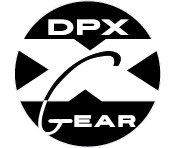
Bass Fishing Frenzy Tactical Blog Review of HEFT 4 Milspec
Here's a great review of the DPx HEFT 4 Milspec by the Bass Fishing Frenzy Tactical Blog. The review is copied below or can be found here.
The DPX gear HEFT 4 Assault
Hey guys, its Tag again, with another spectacular product coming your way! This time We're checking out the DPx Gear HEFT 4 Assault edition. this knife can be found at http://www.dpxgear.com/dpx-heft-4-milspec.html
What DPx Calls the HEFT
What the HEFT really is
Why it rocks
Simply:
Its Cheaper, has a Deep Belly, Nice gimping, great scales, and marvelous, feature packed blade and design
Complicatedly:
- Wire cutter/stripper
- Bottle opener
- Handle storage
- Skull crusher
- Niolox Steel
- Pry bar
- Bit driver
- and for all you snobs, Made in ITALY by Lionsteel:)
In just that list, you can tell that the knife has a lot of bang for your buck. But, thats not all that you want to hear, because it sounds like a sales pitch. so lets talk about the knife itself.
The blade:
The Sword grind with its Inch and a sixteenth bellly, works fantastically for all tasks in the bushcraft world. It whittles like a champ, with your hand finding great purchase on the gimping, and on the other end of the spectrum, its very tough, and stands up well to batoning and use as a shovel and pry bar. It also does great with other camp tasks, like cleaning fingers, cutting up dinner, and stirring up soup! In my opinion, the HEFT is really one of my favorite bush knives... ever.
The Handle:
Also, I love the fact that when you remove the handles, they're hollow, and can easily fit a firesteel and a pea lighter inside! I sadly dont have pictures of this, but I assure you its great! Also, the HEFT 4 has the bottle opener and hex driver in its handles as well. While I really like this functionality, I would like it more if they gave me a set of bits to put in the sheath.
The sheath:
Closing thoughts:

Review of the Danger Tag by Tactiholics on YouTube
Check out the latest review of DPx Gear's Danger Tag by Tactiholics on YouTube. See this handy little EDC cut through zip ties and duct tape. Perfect for carrying everyday in your wallet, car, or pocket. Buy yours for $5 here.
http://youtu.be/7kladb3oFcA

Follow DPx Gear on Instagram!
We'd like to invite you to follow Lisa Pelton, DPx Gear's COO on Instagram today at dpxgear_lisa. We’ll share behind-the-scenes photos from the DPx headquarters as well as plenty of photos of our various adventures. We may even squeeze in a giveaway or two just for our followers. Also be sure to tag your photos with #dpxgear, so we don’t miss any!!

Down the Gambia
By Will Grant
In a remote corner of West Africa, the River Gambia remains one of the last major undammed rivers on the continent. Flowing from a small rivulet in the Guinean highlands, known as the Fouta Djallon, the river runs northwest and west for 733 miles to its mouth at the Atlantic Ocean—a six-mile-wide estuary of mangroves, sand bars, and braided streams.
In what may be the first source-to-sea descent of the river, Jason Florio, a New York-based photographer, and his wife, Helen Jones-Florio, have set out to witness and document the river in its entirety. With folding canoes and Pelican cases full of hardware, the two will spend the next three months on the river.
“I’m not an explorer or adventurer,” says Florio. “I’m really a photographer at heart. So this is kind of new territory for me.”
Rife with hippos, poachers, crocodiles, and a thousand unseen hazards, descending the River Gambia will be no walk in the park. Florio, who is far more comfortable shooting a camera than a rifle, does not seek out the dangerous side of life. Nor does he intentionally visit hostile environments—though he’s been shot at by a sniper in Somalia and trekked through warzones in Afghanistan. He knows this expedition will be long and difficult in many ways, but the hope is that this will be a trip without violent confrontation, armed rebel groups, or warring militias. To the Florios, it’s a river trip through a wild slice of Africa.
The first challenge will be finding the source of the river. To do that, they’re mostly relying on a book by Frenchman Gaspard Mollien, one of the earliest Europeans to explore West Africa in the nineteenth century. In 1820, Mollien published a book called Journey into the African Interior in which he documents finding the source of the River Gambia. That book, and a handful of maps from the Royal Geographical Society, where Florio is a fellow, is all he and his wife have to go on.
At the river’s source in the Fouta Djallon, the river is too narrow and shallow to float. The Florios will trek 150 to 200 kilometers downstream to their stashed canoes in Senegal where the river widens and deepens. From there, they’ll descend through scattered gold mining developments and fishing villages to Niokolo-Koba National Park, where the poachers are reputably as dangerous as the hippos.
“There’s a lot of poaching in the park,” he says, “but as long we don’t bother the poachers, we think they’ll leave us alone. That’s what we’re hoping, anyway.”
About half the river is considered navigable. With the folding boats, which the two tested between pubs on canals in rural England, they hope to be on the water a lot more than half the time. The two will rely heavily on prearranged guides, mostly local fisherman, to coordinate border crossings, necessary permits, and resupply points along the way.
The Florios have timed their expedition to coincide with the end of the rainy season when the flows will be high enough to paddle most of the river but the regular, monsoonal drenchings will have ended. As the river dries out, it becomes less friendly to paddlers.
“If the water gets too low,” Florio says, “the rocks will be bad and the hippos will congregate.”
As the saying goes, behind the mosquito, the hippopotamus is the most dangerous animal in Africa. In fact, hippos are responsible for killing more people than any other animal on the continent. Some people have told Florio that the hippos won’t be a problem—that people deal with them everyday without incident. Others have warned him that the animals can be aggressively territorial and to give any they encounter a wide berth.
“They reckon there are four to six thousand hippos on the river,” he says. “If the hippo situation becomes problematic, then we get out and portage. We might have to get out of the river at night.”
While descending the river at the end of the wet season seems like a good idea, the logistics of an expedition this size are sure to be fluid. The first change of plans was a three-week delay of the ship carrying their gear to Gambia. Their tentative launch date is now November 11.
The Florios are intent on travelling light. They’ll be eating a lot of local food, like fish from the river and millet bought at villages along the way. They’ve also packed Clif Bars, energy snacks, and several bundles of Ramen noodles (at $0.18 per pack, a super-cheap form of nourishment).
They’re paddling folding canoes made by Norway-based Ally Canoes. They’ll provide live tracking through a Yellowbrick tracking device. They’ll boil water for their Ramen noodles with stoves from Kelly Kettles. They’ll also be carrying an array of DPx Gear knives for both their own use and as gifts for the locals.
The hardware, though the heaviest part of their load, is arguably the most important. The cameras, solar chargers and laptop computers will allow the two to document the river and the people who rely on it for their livelihood. As they hunt for the river’s source, trek downstream, paddle their folding boats, and negotiate hundreds of miles of riverine wilderness, the Florios will maintain a blog of their journey, while also posting updates on their Facebook page.
But in the end, the expedition is about creating a document of the people and the river. Although it’s one of the last major undammed rivers in Africa, that could, and most likely will, change.
The Gambia, the country nicely bisected by the lower third of the river, is the smallest country in mainland Africa, with a population of 1.7 million. The river is the lifeline of the country and the livelihood of nearly all that live on its banks. But development is scarce. Bumpy negotiations between Gambia and Senegal have stood in the way most major projects.
Talk of damming the River Gambia has gone on for the last decade. In many ways, a dam is inevitable. And when the waterway is changed, the effects on the people who depend on it will be irrevocable.

Florio first traveled to the River Gambia in 1996 to document an ecotourism project. He returned in 2009 to produce “A Short Walk in the Gambian Bush—930 km African Odyssey,” which won first place at The International Photography Awards of 2010. During the 2009 expedition, Florio and his wife circumnavigated Gambia, the country, travelling up one bank and down the other.
“That trip felt like a warm-up for something bigger,” Florio says. “Now we want to meet the people, see if they know about the damming, see how it will affect them.”
The Florios expect to reach the river’s mouth sometime early next year. But the expedition could take longer than that—either due to logistical complications or interesting places to spend time. They don’t intend to hurry through this cultural and environmental cross section of West Africa. But they have little idea of what lies in store for them.
“This is one of the biggest things we’ve tackled in terms of logistics,” Florio says. “There are a lot of question marks. But at the end of the day, I think you just have to get there and let the pieces fall into place.”
As the Florios make their way to river’s headwaters and begin their downstream journey, we’ll be keeping tabs on their progress. Check back here for the latest dispatches.
All images copyright Jason Florio.
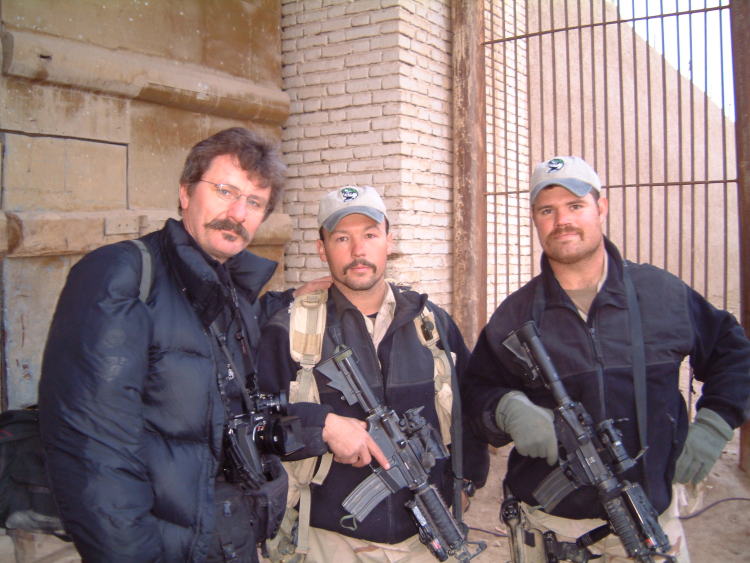
RYP Featured in Blade Magazine

See the Blade Magazine blog post here.
A visitor to some of the world’s most dangerous places, Robert Young Pelton is more than simply a modern-day adventurer. He places himself in harm’s way to bring relevant perspective to the armed struggles that continue to grip various regions around the world.
Also known by his initials of RYP, Pelton has become a recognized figure, discussing his experiences on major television networks, producing documentary films, and writing several books (includingLicensed To Kill, among others) to commemorate his experiences, and providing practical survival techniques and training tips to a vast audience of readers. During his travels, he has lived among the Taliban and Somali pirates and ridden alongside CIA and private contractor personnel performing security and investigative functions in the war-torn regions of the Balkans, Africa, South America, Southeast Asia, Iraq, Afghanistan and Pakistan.
His latest venture is the founding of a knife company, DPx Gear, specializing in rugged, versatile knives specifically suited for combat, rescue and survival in hostile environments. At the most recent BLADE Show, the company won the Blade Magazine 2012 Most Innovative Imported Design® for the HEST T3. Through it all, Pelton has maintained a healthy respect for the function and necessity of the knife. His understanding of its uses as a tool and as a weapon has come from practical experience, literally in the line of fire and in dangerous situations on a regular basis.
“I don’t have a military background,” Pelton commented during a recent interview. “I actually began my career as a copywriter and then worked with Steve Jobs on the launch of the Mac computer and then with the Upper Deck baseball card company in marketing.”
When he subsequently decided to take a month off work, Pelton picked a random spot on the map and decided to strike out on his first adventure. From there, his series of expeditions grew rapidly into an industry, an industry fraught with high risk—but in his mind, high return as well. Practical experience led to the realization that a high-performance knife is an essential component of the adventurer’s package and to Pelton’s involvement with DPx. He designed the HEST (Hostile Environment Survival Tool) as a result of his experience, and the subsequent product line reflects his time in the field.
“As you start out, you have that moment when you’ve got to get your stuff together, right?” he winked. “Traveling in dangerous places and war zones means you aren’t able to carry a lot, and I was looking for something that would work not only as a survival knife that works when you’re lost and rubbing two sticks together, but also something that works for defense if somebody jumps you.”—BY MIKE HASKEW
To read the complete story on RYP and his world travels, check out the digital version of the December BLADE®. For info on how to get your digital copy, click on www.shopblade.com/blade-dec-2012-digital-issue?lid=SSfbbl101912
CAPTIONS FOR ABOVE PICTURES, FROM TOP:
1) Robert Young Pelton with U.S. Special Forces in Afghanistan, 2001. (photo courtesy of RYP)
2) Pelton and his DPx Gear won the Blade Magazine 2012 Most Innovative Imported Design for the HEST T3 folding knife. (Point Seven photo)
3) RYP interviews Afghanistan President Hamid Karzai. (photo courtesy of RYP)
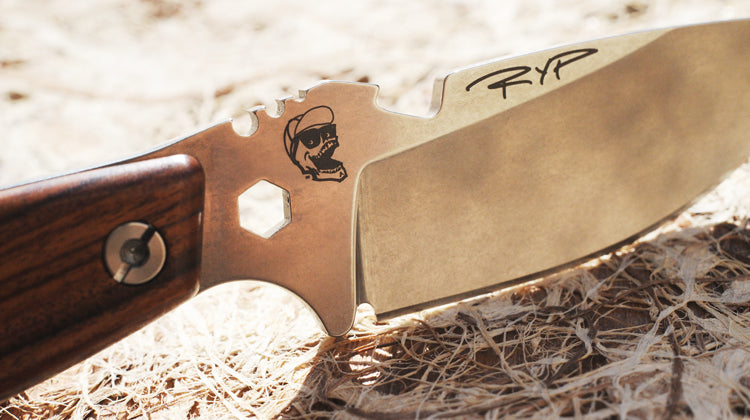
Gear Patrol Review of DPx HEST II Knife
Once you start toting a knife in your EDC, you’ll wonder how you ever lived without it. Cutting, prying, and oh-so-important meat-slicing — you’ve never had it so good. There are plenty of fantastic utility knives for that kind of work — but they don’t quite cut it when you move out of the concrete jungle and into the leafy one. The DPx Gear HEST II Survival Knife ($250) may not be as suave as your EDC cutter of choice — but it is the perfect companion for roughin’ it.
Known as a Hostile Environment Survival Tool (HEST), the limited run fixed-blade knife is an upgraded version of their DPx HEST Original. The upgrade includes a 3.15-inch Sleipnersteel blade with a more resilient cutting edge than other hard steels (60 Rockwell scale). The HEST II also includes a stronger, re-angled pry notch, wire strippers and a hex driver. Go stealthy with the PVD coated blade of the Assault version (we don’t advocate assassins, for the record) or a bit more flashy and sharp with the naked stone-washed blade and wood scales of the Woodsman. Both knives come with a hollow handle for storing survival materials. You can probably fit your suburbanized knife in there.
See the full review here: http://gearpatrol.com/2012/10/26/dpx-gear-hest-2-0-survival-knife/

DPx HEFT Line Review and Testing in the Philippines
Reza Allah-Bakhshi, friend of DPx, recently traveled to Mindanao in the Philippines and used the DPx HEFT line for various survival and jungle applications. Check out his video on our YouTube channel and let us know what you think!
WARNING: At approximately 5:55 there is footage of a chicken being processed using our knives. If you are sensitive to this imagery make sure to fast forward here.
See the video on the DPx YouTube channel here.
Subscribe to the DPx Gear YouTube channel here.
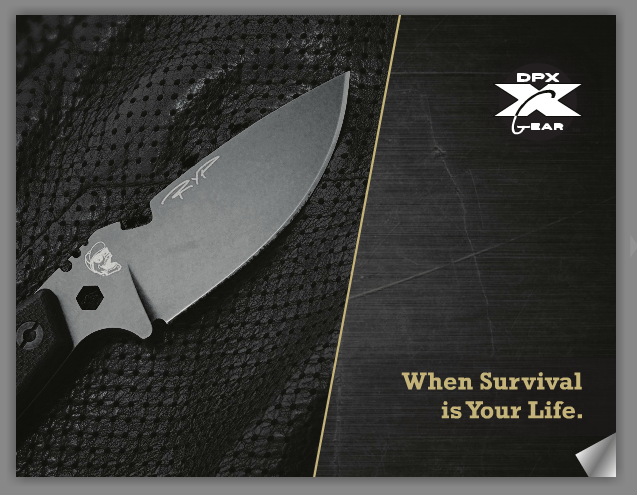
DPx Gear Brochure Available Online

We now have available a virtual version of our brochure here. Enjoy!
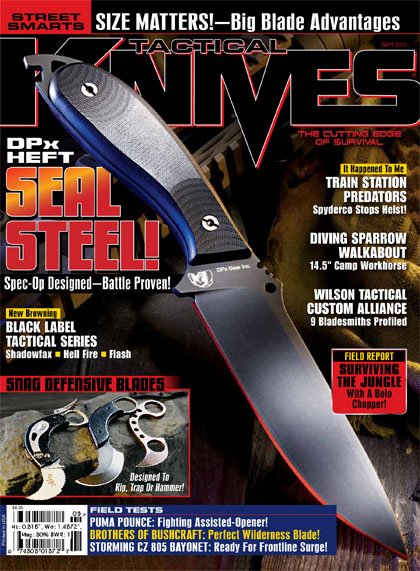
DPx H•E•F•T Line Featured on Cover of Tactical Knives Magazine

The September 2012 issue of Tactical Knives magazine gives the DPx HEFT 6 Assault the cover spot and includes an article about DPx Gear's H•E•F•T line of fixed blade knives. The line is popular with local military personnel and knives have been purchased by members out of their own pockets to replace their standard issue gear. You can read the entire tactical-life.com article here or find the article in the Tactical Knives September 2012 issue on newsstands now.
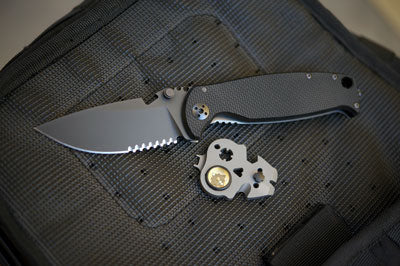
Introducing the DPx HEST/F 2.0 Triple Black Special Edition Knife
DPx HEST/F 2.0 Triple Black Special Edition - Only 500 on this planet.
Click here to buy one now.
The DPx HEST/F 2.0 Triple Black Special Edition is an all black stealth version of our hard use folding knife. The custom tool features a hand made Pyser brass compass made in the UK for the SAS and survival applications. The tool features a cord cutter, pry, hex driver, pivot tension adjustment tool and tool to replace the hardened steel glass breaker. A soft tip screw is also provided if the glass breaker is not required.
The Triple Black Special Edition is an extremely low-profile knife designed for law enforcement and military use where a superior cutting edge and low visual signature are priorities. This is the first HEST folder with custom designed serrations designed with the input of first responders and SAR professionals.
The 3.94” German Niolox corrosion resistant blade is PVD coated with a matte black TiCN coating to increase hardness and concealability.
One side of the frame is scaled in grip textured black American G10 polymer. The other slab is 6Al4V titanium that’s alloy coated. The blade is vapor deposition coated with a slippery, durable layer of Titanium Nickel. The signature black pocket clip features the Mr. DP™ logo.
Like the other DPx HEST/F models, the Triple Black Special Edition comes with the patented RotoBlock® to lock the folder open. Three sizes of wire strippers serve as unique and slip-proof jimping. A removable glass breaker screws into the butt of the knife, and the hex driver in the handle may be used with the knife open or closed.
Specifications
Blade length: 3.94”
Blade thickness: 0.197”
Cutting edge: 3.10”
Closed length: 4.38”
Overall length: 7.63”
Handle thickness: 0.54”
Weight: 5.10 oz
• Stainless Niolox steel blade with 60 HRC
• PVD coated titanium nickel scale and blade
• Custom DPx serration that can be re-sharpened
• Comes with newly-designed titanium tool with driver, cord cutter, glass breaker remover, pivot adjustor, mounting holes and pry bar
• Tool includes unique hand made Pyser brass survival compass used by the British Special Air Service with glow in the dark indicators for North
• Sterile knife design
